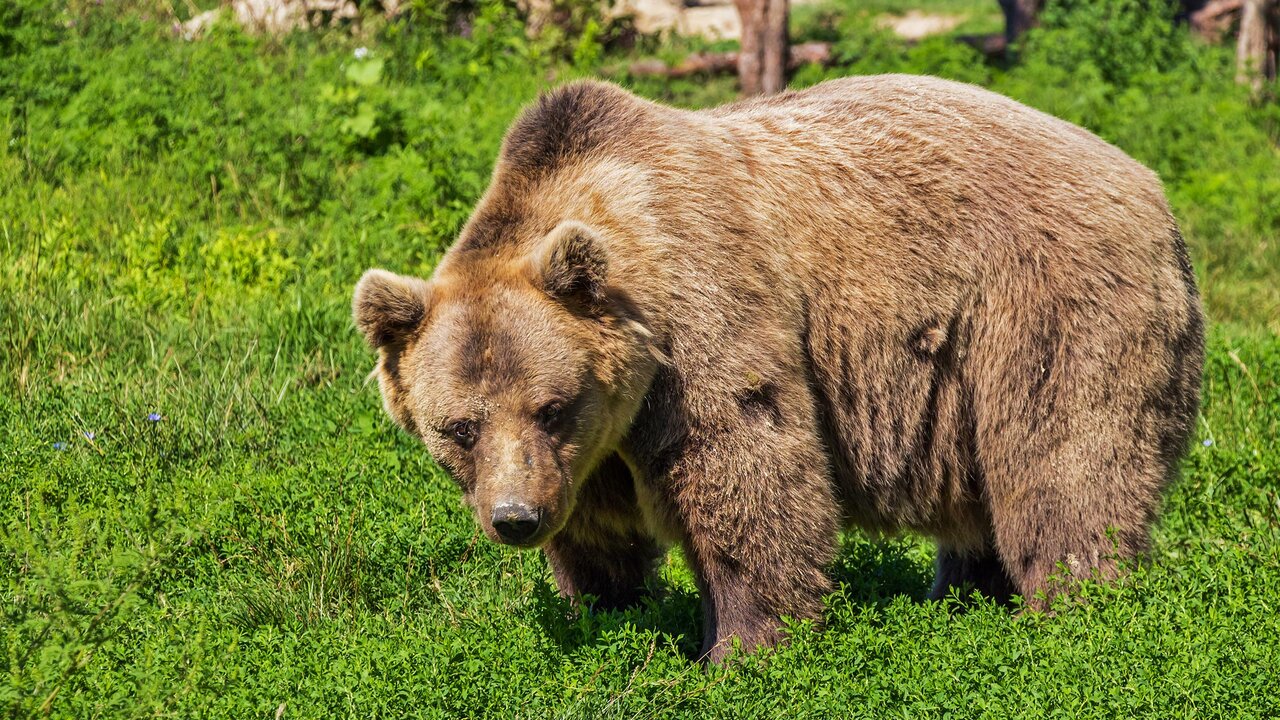
Before embarking on a hike, you always determine your destination, timing, and what to bring along, correct? You should also strategize on how to hike (or camp) securely around wildlife, particularly bears. It may appear that bears are only present in locations like Yellowstone, the Smoky Mountains, or Alaska. However, bears inhabit a significantly larger expanse. Are you aware that black bears can be found in 40 out of the 50 US states?
The habitats of black bears and grizzly bears are expanding each year, so prior to venturing into the great outdoors, ensure you verify if it’s bear territory. If it is, continue reading for our safety guidelines on how to hike in bear territory.
Do not presume that just because it’s chilly, bears will be resting in their dens. Just last month (in November), a family of five bears was roaming our yard in the North Carolina mountains. Moreover, grizzly bears may emerge from hibernation as early as March in Yellowstone.
Always carry bear spray and ensure you know how to utilize it before starting your journey. Bear spray is prohibited on airplanes, so if you are flying to your destination, you’ll have to purchase it locally. REI stocks them. Watch the video at the conclusion of this post to understand how to handle bear spray. *Do not activate the bear spray indoors*, learn to deploy it outdoors.
NEVER give food to a bear, approach it, attempt to take a selfie with a bear, or try to pet it. If you are at a national park and witness someone doing this, capture a photo (try to get the license plate number) and report the incident at the office. A bear that is fed is a dead bear.
Hiking in bear territory
– If you see a bear before it notices you: remain still, don’t approach, and savor the moment. If it’s heading in your direction, ensure it knows you are present and announce yourself with a loud and serious “Hey Bear.” The bear will likely turn away. If you don’t make your presence known, you might startle the bear if it gets too close, and it could react aggressively. (I mean, if you surprise me, I might yell, so it’s understandable to have a response.) Once the bear moves away, quietly retreat in the opposite direction. We had a close call with a mother grizzly and her cub in British Columbia, and we followed this approach. You can read the story here.
– If you come across a bear that is aware of your presence: do not run; running may provoke a chase. Gradually back away in the opposite direction and wait for the bear to depart.
– Stay alert to your environment, make noise at intervals, and refrain from using earbuds.
– Avoid hiking solo.
– Keep children within sight.
– Make noise in dense areas.
– Be particularly vigilant when foraging for berries or nuts. Bears are doing the same!
– Always KEEP YOUR PETS ON A LEASH or leave them at home. Dogs can irritate bears and cause them distress, which may lead to a bear attacking your dog.
– Do not litter. Carry out your trash. Making bears accustomed to human food sources increases the likelihood of dangerous encounters with humans.
– Do not position yourself between a mother and her cub. If a mother believes her cub is threatened, she will defend it. If you see a cub, always search for the mother and remain vigilant.
Camping in bear territory
– Set up backcountry camps away from thick vegetation and natural food sources.
– Maintain a clean camp. Do not leave food lying around, and always secure it (in the vehicle, or in a bear-resistant container) if you go out for a hike.
– Do not store anything that emits food or toiletry scents in your tent. No snacks, no toothpaste, no deodorant, no soft drinks, no lip balm, no sunscreen, no insect repellent.
– If you are camping with a pet and need a litter box in the tent, utilize unscented litter and keep it clean. No pet treats either.
– If you are car camping, keep food and toiletries inside a locked vehicle and ensure all windows are closed. Bears have figured out how to open unlocked cars and break open windows.
– If you are backpacking, keep food and toiletries suspended at least 10 feet above the ground and 10 feet from any tree branch. Some parks have a system in place (see the red arrow in the photo below from a backcountry campsite in Yellowstone). This regulation may vary from one national park to another, so always verify the regulations at the park’s entrance.
Cooking in bear territory
– When cooking, do not dispose of food waste in your fire (or outside the fire for that matter). No bean sauce, or meat fats, or anything similar.
– Cook away from your tent to avoid attracting bears to your sleeping area.